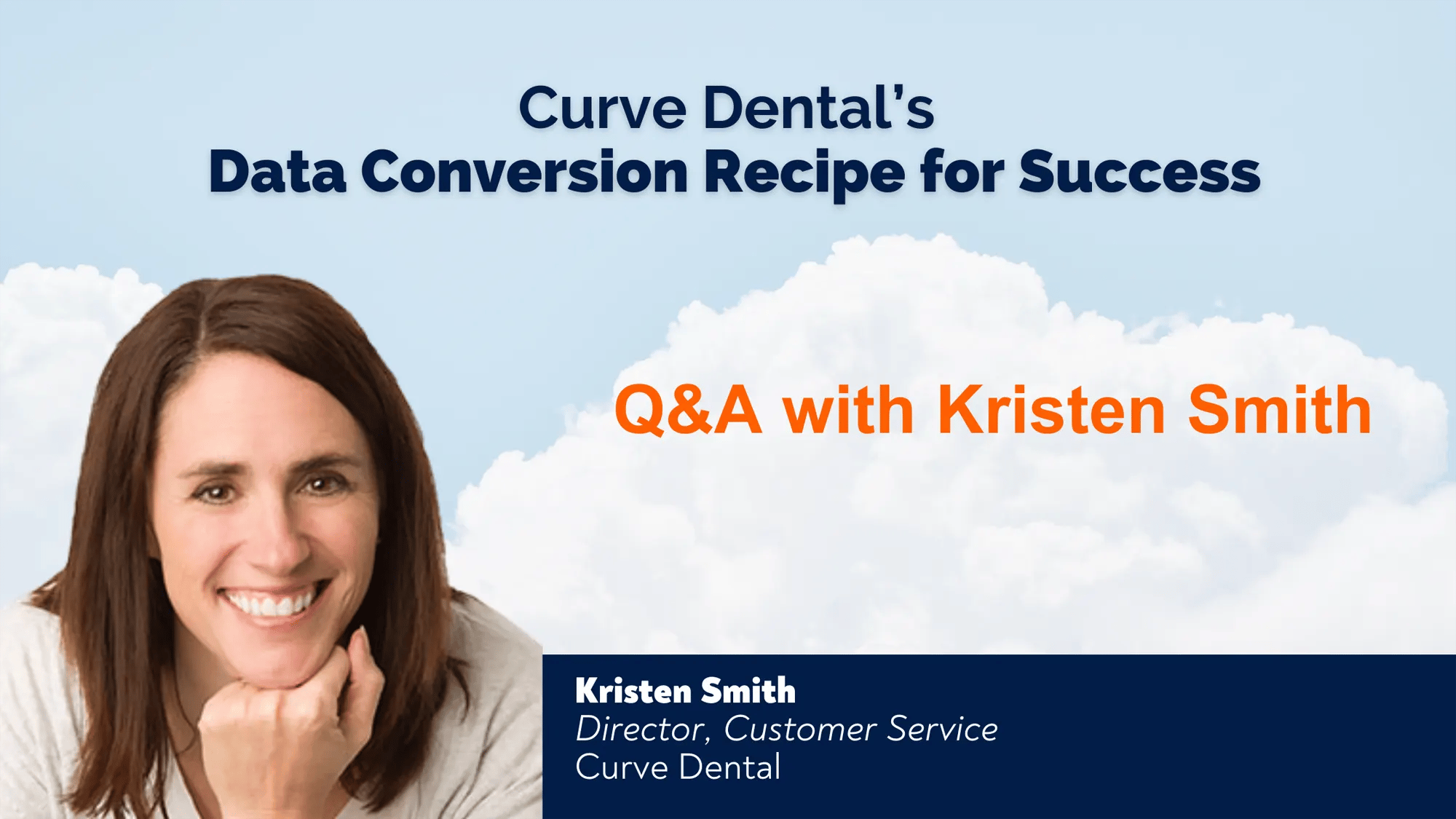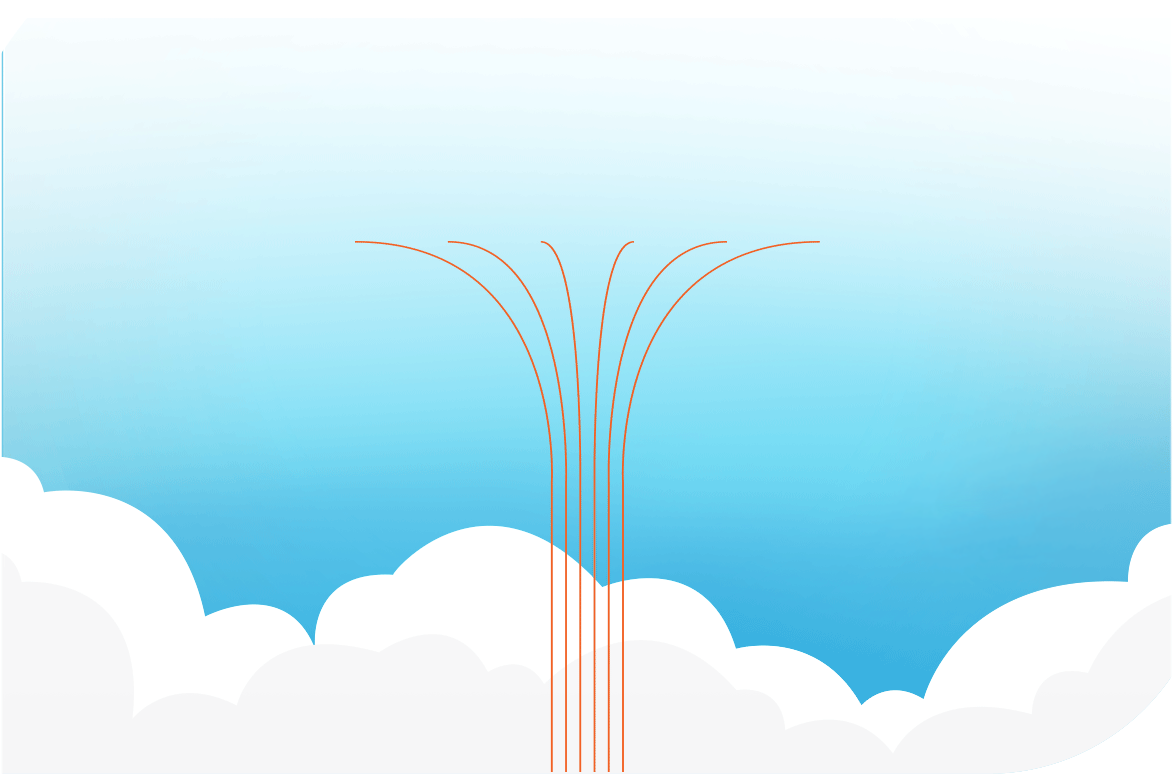Curve Dental’s Data Conversion Recipe for Success
Even when dental practices start to feel that their practice management software is no longer giving them what they need, many can be hesitant to switch because they fear that the data conversion process will be cumbersome, time-consuming, and disruptive. We spoke to Kristen Smith, Curve’s Director of Customer Service, to understand how her department helps make this transition as painless and comprehensive as possible.
Q: What are the biggest challenges associated with data conversion and how does Curve address them?
A: The biggest challenge in any conversion process is mapping the office’s data correctly. Every office uses its software a little different meaning that 2 data conversions from the very same legacy software can be quite different. Curve has done thousands of these conversions and we make it a priority to work with users to ensure their data is converted properly. We don’t have a one size fits all formula. True, we have a proven process in place that is fast and accurate but we tailor it to each office. Our conversions include patient data and notes, charting, treatment planning information, insurance information, and more. In other words, everything an office needs to run their practice with Curve Hero.
Q: What about images and documents?
A: We absolutely convert them! Most of Curve’s competitors will not even touch images or documents, which means that the dental provider must move them to the new system manually or continue running two systems in order to access archival records. Just like data, Curve has converted thousands of image and document sets for our customers from almost every competitive system. We do this because it delivers the most seamless and complete conversion experience for our customers. Even though it is very labor-intensive, it’s the right thing to do.
Q: What is Curve’s data conversion process?
A: We break our process into two main phases. Phase 1 includes initial set-up during which customers provide us with a copy of their data and accounts receivable report, which enables us to complete a preliminary test conversion. It also features a data review in which the Curve Project Manager meets with the practice owner and their point person to review the data that has been converted and placed inside their Curve Hero database. We then work with the customer to review the converted data to uncover any issues or concerns that they may identify. Once the data is reviewed and approved we can proceed to Phase 2, Final Assembly.
During a Final Assembly Conference, we confirm everything is in place for staff to begin using Curve Hero on a day-to-day basis. Our Project Manager and Data Services Experts present customers with their Curve Hero database and discuss any specific requests and/or exceptions that came out of the preliminary conversion process. We then recommend a timeline for imaging and document conversions, which begins right after the office goes live.
Q: How is the Curve data conversion team structured and what are their roles?
A: Curve assigns a Project Manager who acts as the single point of contact. Our Data Conversion Specialists work with customers to retrieve data and convert it into Curve's. I’m not exaggerating when I say that they are miracle workers because they dig deep to resolve any issues that pop up along the way with the data. Our specialists convert patient demographic information, charting history and notes, insurance, cards, referral letters scanned for each patient, as well as special requests. They take raw files and massage them to integrate seamlessly into Curve Hero. They are committed to meeting deadlines regardless of the challenges the data present — just what you’d expect from miracle workers!
Q: What can the practice do to ensure as smooth a conversion as possible?
A: It is really important for customers to pay attention to details during the process. We encourage customers to make notes about possible issues. If they tell us about an issue, we can typically fix it. I’d say 9.5 times out of 10 we can find a resolution. During the data review meeting, we review the data with them to make sure they feel confident with how it converts. It is extremely important that there is an Office Champion to be the main contact during the data conversion. For some offices, we need to hand-hold more than others but regardless, our job is to help customers through the transition and we take that seriously. The common elements of a successful conversion are the Office Champion, clear communication, and thorough follow-up. We guide customers every step of the way to ensure their success.
Q: Why do you think Curve does data conversion better than anyone else?
A: We believe in explaining to our customers what they should expect throughout the conversion process. We make sure they understand the process so there are no surprises. We brief them at the start that they know their data and we don’t, but by the end of the conversion, we’ll be intimately familiar with it. What makes us better than anyone else is the time we invest with the office at the very start of the relationship. We make sure that we begin with a strong foundation before the process launches. We’re committed to resolving any issue that comes our way and going the extra mile to convert the data the way it should be. I like to use the kitchen contractor analogy when describing Curve’s data conversion. If the process for redoing your kitchen is painful -- e.g. the contractor misses deadlines, is sloppy, cuts corners, or misses crucial details that you have to constantly point out - you still might end up with a good final product, but you’ll never forget the negative experience. But if the process is smooth, you accept the unavoidable inconvenience of not having a kitchen for a while and some disruption to your everyday life because it was a small price to pay for getting the kitchen of your dreams. The great thing about Curve Hero is you get the software of your dreams with as little pain as possible and, in the end, you have a solution that is modern, easy to learn and use, and typically saves you a lot of expense month after month compared to your old system.




